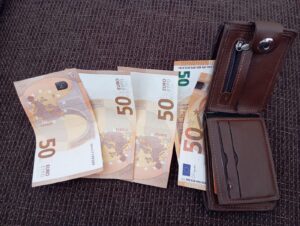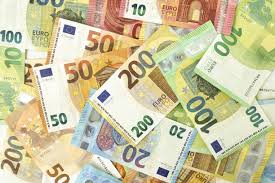Undetectable Bank Notes has sparked both intrigue and concern. While most people are shifting toward digital payments and cryptocurrencies, physical currency remains a critical part of many economies. However, with the advancement of technology comes the evolution of counterfeiting methods—giving rise to a black-market product known as undetectable bank notes.
In this article, we’ll explore what undetectable bank notes are, how they’re made, why they’re concerning, how authorities are responding, and what you should know to stay informed and protected.

What Are Undetectable Bank Notes?
Undetectable bank notes refer to counterfeit currency designed to pass common verification tests used by banks, businesses, and consumers. These notes are often so intricately crafted that they evade ultraviolet (UV) light detection, pen checks, magnetic ink sensors, and even sophisticated ATM validation systems.
Unlike crude fakes that are easy to spot, undetectable bank notes aim to replicate every detail of authentic currency—from watermarks and holograms to micro-printing and paper composition. The goal of counterfeiters is simple: create a bill that’s indistinguishable from real money even under scrutiny.
How Are Undetectable Bank Notes Made?
Creating undetectable bank notes is no small feat. These operations are usually run by highly organized criminal groups with access to advanced printing technology, specialized inks, and detailed knowledge of currency production processes.
Some of the techniques used include:
-
High-resolution offset printing: Mimics the complex patterns used in legitimate bank notes.
-
Polymer replication: For currencies that use plastic substrates instead of paper.
-
Custom-mixed inks: To match the color and UV-reactive properties of real notes.
-
Embedded security features: Such as simulated watermarks or threads that are nearly impossible to distinguish from the real thing.
In some cases, these operations even source paper that closely resembles the cotton-linen blend used by central banks, further adding to the difficulty of detection.

Undetectable Bank Notes
Why Are Undetectable Bank Notes a Concern?
The spread of undetectable bank notes poses serious risks to economic stability and public trust in cash transactions. Here are just a few of the concerns:
1. Loss of Consumer Confidence
If individuals and businesses cannot reliably determine whether the cash they receive is genuine, it undermines confidence in the financial system. Small businesses, in particular, are vulnerable because they may lack the tools or expertise to detect such sophisticated counterfeits.
2. Banking System Vulnerabilities
While ATMs and deposit machines have become more advanced, they are not immune. Some undetectable banknotes can even fool bank-grade machines, leading to untraceable losses that cost financial institutions millions of dollars annually.
3. Fueling Organized Crime
The production and distribution of undetectable bank notes often fund larger criminal enterprises, including drug trafficking, money laundering, and even terrorism. The profitability of counterfeiting serves as a key revenue stream for these groups.
4. Economic Instability
A significant influx of fake money into a country’s economy can distort the money supply, trigger inflation, and disrupt monetary policy efforts.
Notable Cases Around the World
In recent years, authorities in several countries have uncovered large-scale operations producing undetectable bank notes:
-
Europe: Europol has seized millions of euros in fake bank notes created using industrial-grade equipment, some of which were accepted even by high-security bank machines.
-
United States: The Secret Service, which oversees counterfeit investigations, has reported the emergence of “supernotes”—counterfeits so perfect they require lab testing for verification.
-
Africa and Southeast Asia: Due to varying quality control in cash handling, some regions have become hotspots for the circulation of undetectable fakes.
These cases highlight the global nature of the problem and the ongoing arms race between counterfeiters and law enforcement.
How Authorities Are Responding
Governments and central banks are constantly updating their currency designs and investing in anti-counterfeit technologies. Some of the newer innovations include:
-
Color-shifting inks that change hue when viewed from different angles.
-
Micro-optic lenses that produce 3D effects and animations under movement.
-
Biometric tie-ins, such as smartphone apps that use computer vision to verify notes.
-
Blockchain serialization to track the life cycle of physical currency.
Furthermore, international agencies like INTERPOL and the International Bank Note Society are collaborating to share intelligence and standardize detection practices.
How to Protect Yourself
While the average person may not encounter undetectable bank notes often, it’s still wise to know how to protect yourself:
1. Know the Security Features
Every major currency has distinct features that help identify it as legitimate. Educate yourself on the specific signs to look for on your local currency. These usually include:
-
Raised printing you can feel
-
Watermarks visible against the light
-
Security threads embedded in the paper
-
Microprinting only visible under magnification
2. Use Trusted Sources
Avoid exchanging large amounts of cash through unofficial channels or third-party resellers. Use licensed banks, ATMs, or retail stores known for legitimate practices.
3. Invest in a Detection Device
UV light detectors, magnetic ink scanners, and counterfeit detection pens can be purchased online or at office supply stores. While not foolproof against the most advanced fakes, they still catch the majority of counterfeit bills in circulation.
4. Report Suspicious Notes
If you come across a suspicious bank note, don’t try to use it. Instead, report it to your local bank or law enforcement. Holding or using counterfeit money—knowingly or not—can carry legal consequences.
Conclusion
The emergence of undetectable bank notes represents a significant challenge in the 21st-century economy. As counterfeiting techniques become more refined, the line between real and fake currency continues to blur. While governments and financial institutions work diligently to stay ahead of the curve, it’s also up to individuals and businesses to remain vigilant.
Staying educated, investing in detection tools, and reporting counterfeit money can go a long way in preserving trust in physical cash and deterring criminal activity. Whether you’re a consumer, business owner, or financial professional, understanding the impact and risks of undetectable bank notes is essential in today’s complex monetary landscape.
